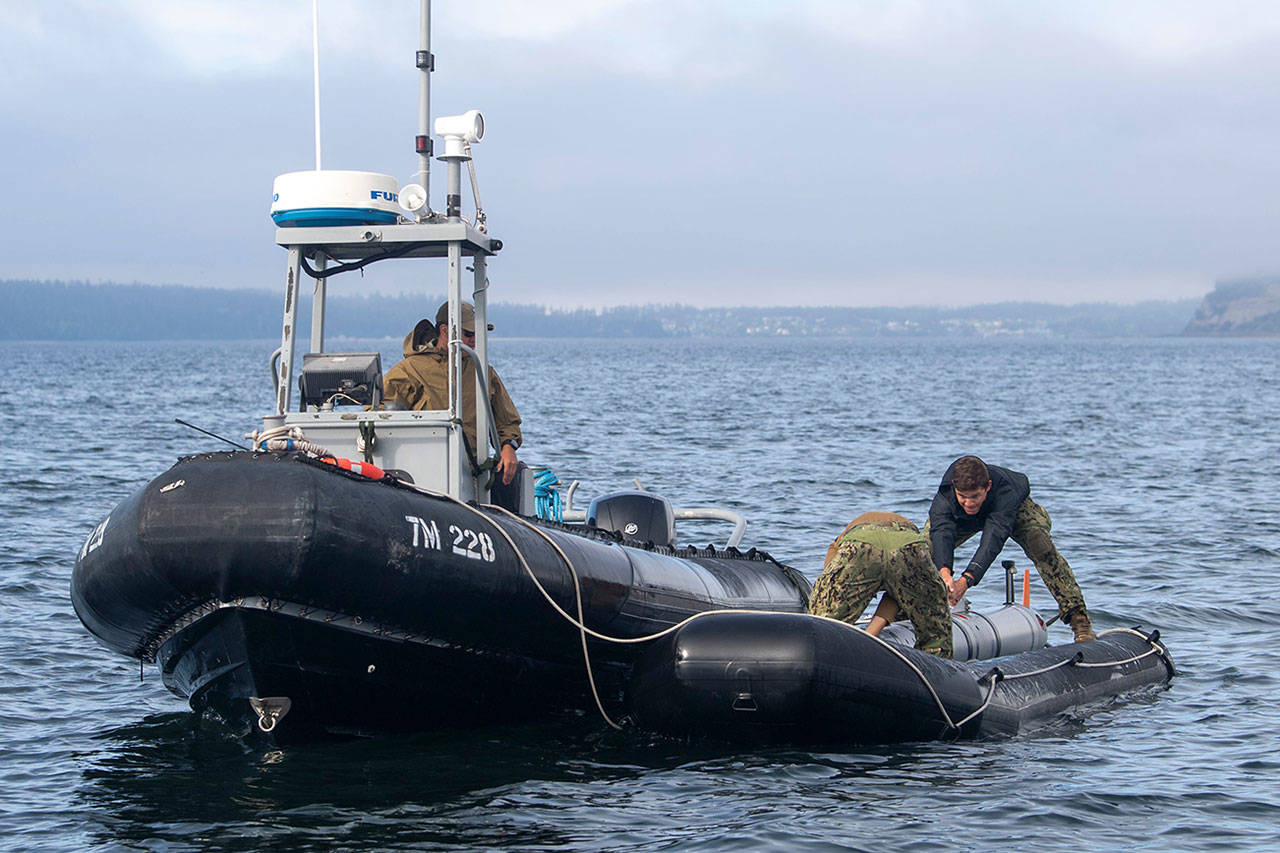U.S. Navy Explosive Ordnance Disposal Mobile Unit One from San Diego and Unit Five from Guam arrived in Naval Air Station Whidbey Island to conduct underwater training for minesweeping.
No live explosives were being used.
Unit One sent an unmanned systems platoon and a command-and-control element while Unit Two sent a mine countermeasures platoon.
A complete expeditionary mine countermeasures company is working through their advanced based certification exercise to prepare for a deployment in the near future, Cmdr. Brian J. Reitter said.
“The training value we get out of this can not be replicated,” Reitter said.
“The tidal shifts, the current, the way the bottom type is, and a lot of the man-made objects in the water from the fishing industry helps us really to stress ourselves in a controlled operational environment.”
Conditions at Whidbey help the unit to prepare for the adversities and challenges they’ll face on deployment, according to Reitter.
“What we do is we replicate perceived adversaries’ tactics if they were trying to prevent maritime access to the harbor or in approaches to the harbor,” he said.
According to a Navy press release, Explosive Ordnance Disposal forces began mine countermeasures operations on July 13 in Crescent Harbor, a key Whidbey Island port, and the Saratoga Passage maritime transit ways in order to reduce the enemy mine threat to support freedom of navigation and sea control.
The training in Crescent Harbor was expected to conclude July 24.



